
Sealant for the engine cooling system: BBF, Liqui Moly, Hi-Gear and others
Content
A leaking engine cooling radiator or interior heater, of course, must be replaced with a new one. Sudden loss of fluid is fraught with serious consequences. However, this is not always possible in different life situations. Often it is necessary to urgently fix a leak without visiting a car service and investing a lot of money.
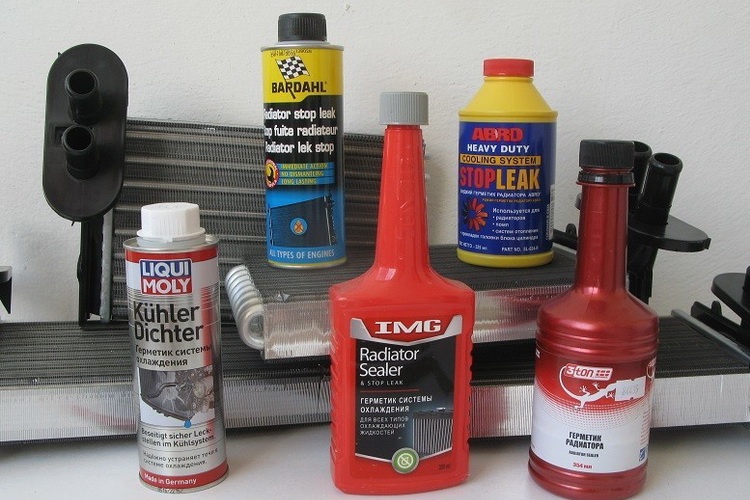
It is tempting to simply add some magic powder to the system and continue using the car, especially since such products are quite widely represented on the auto chemical goods market.
How to use sealants, which one to choose and what cons you need to know about, we will consider below.
Why the sealant eliminates the leak, the principle of operation of the product
For different types of sealants, the principle of operation may differ, manufacturers try to keep the features of their work secret, but the common thing is the ability of the composition to increase in volume when it hits the edges of cracks in radiators.
The resulting particles adhere to surface defects, resulting in dense blood clots that grow and thus seal the holes.
Some compounds are applied from the outside, representing sealing compounds, actually filling the holes. They have high strength and resistance to hot antifreeze.
An important feature is good adhesion to metal parts. An indispensable property of all compositions will be the exclusion of clogging of thin channels for the passage of liquid inside the cooling system.
This is notorious for the previously used ordinary mustard, which, in parallel with the treatment of leaks, clogged the entire system, leading to cooling system failures. A good composition should act selectively, and during repairs it should go away with the old antifreeze.
Application of sealants and their types
All sealants are divided into powder, liquid and polymer.
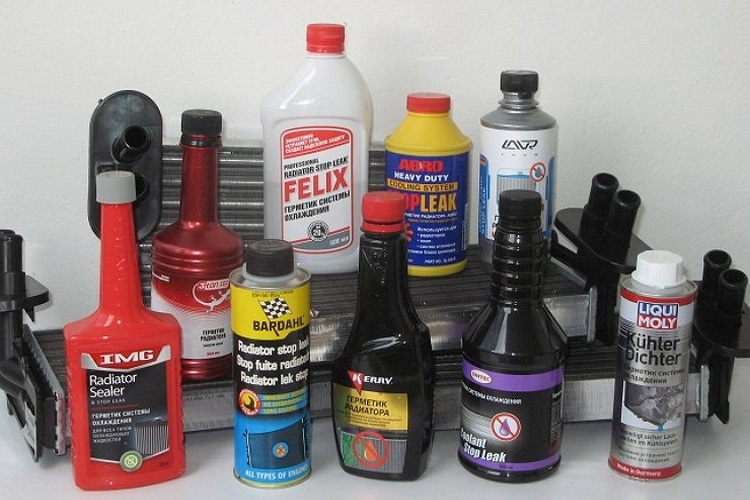

- Simplest powder sealants are quite inexpensive, their action is not much different from mustard.
After entering the system, the powder partially dissolves, its particles swell and can form clusters. At the edges of the crack, such formations increase in size, gradually clogging the leak.
Normally they work only with small damages, but it is precisely these that are formed in real cases. It is clear that no sealant will cure a bullet hole in the radiator, but this is not necessary.
- Unlike powder, liquid sealant works more subtly.
It clogs cooling jackets and radiator tubes much less, while it exits through defects and works according to the principle described above.
Sometimes it is difficult to draw a line between these compositions, since the liquid may contain insoluble particles of the same powder.
The product may contain complex polymers such as polyurethane or silicones.
- Metal-polymer the products are the most perfect, both in terms of the strength of the formed plugs, and in terms of the maximum allowable size of the sealed holes.
A particularly pleasant property can be considered a high durability of the result. But the price of such compositions is quite high.
The division of sealants by chemical composition is rather arbitrary, since, for obvious reasons, firms do not advertise their exact composition.
TOP 6 best sealants for radiators
The products of all leading companies have been repeatedly tested by independent sources, so it is possible to rank the most popular products with sufficient accuracy.


BBF
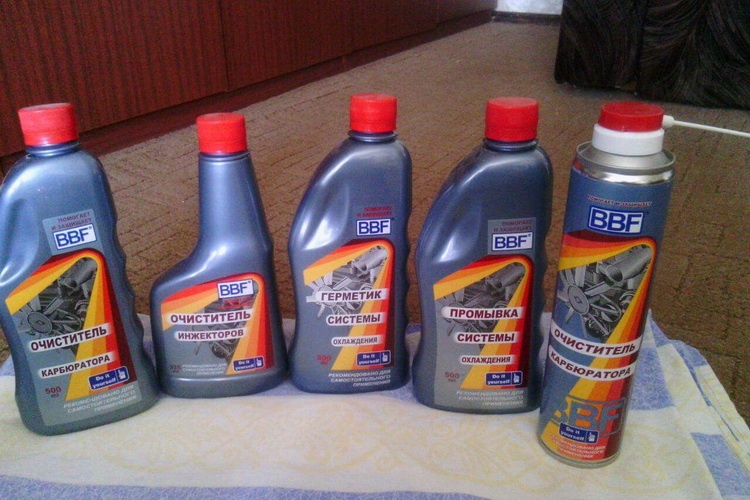

Russian company engaged in the production of automotive chemicals. Produces various types of sealants, the best of which BBF Super shows excellent results when used. And its low cost confidently puts the product in first place in the price-quality rating.
The composition contains modified polymers; during operation, it forms a dense and durable white plug at the site of the leak.
The contents of the bottle are poured into the radiator of an engine cooled to 40-60 degrees, after which, with the stove tap open, the engine starts and is brought to medium speed.
The smallest holes are completely tightened in 20 seconds, the maximum allowable size of about 1 mm will require up to three minutes of work. Precipitation in the most unpleasant places, and these are the thin tubes of the stove radiator and the thermostat, was recorded only within the measurement error, as was the change in the throughput of the radiators.
Liqui Moly
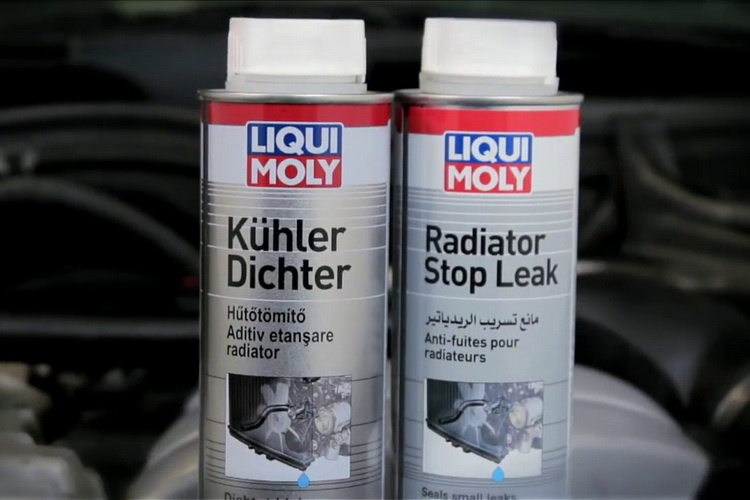

The company is one of the pillars of the global automotive chemistry, as well as petroleum products. Its rather expensive cooling system sealant is made on the basis of metal-containing polymers. Clogs the leak a little slower, but more reliable. It also does not have a harmful effect on other elements of the system.
It is interesting that the rate of blockage of small holes is slightly lower, but the process proceeds confidently, and for large defects, the leak disappearance time becomes a record in all tests. Undoubtedly, this is the merit of metal components.
For the same reason, the product is able to handle leaks into the combustion chamber. There, the working conditions are such that metal is needed. The difference in the method of application is the addition of the composition to the radiator of a running and idling engine.
A high-quality and reliable composition, and as for the price, although it is higher than all, it is small in absolute terms, and such drugs are not used every day.
K-Seal
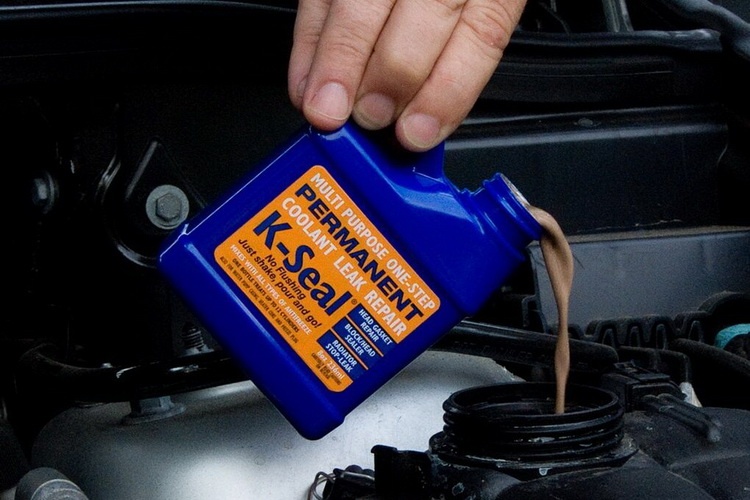

The American product has shown its suitability only for defects up to 0,5 mm. At the same time, it works for a long time, and at a price twice as expensive as even a quality product from Liqui Moly.
Nevertheless, he coped with the task, the resulting seal is very reliable due to the metal content, that is, the tool can be confidently used when unhurried work with a long-term result is required.
Hi Gear


The drug Hi-Gear Stop Leak, supposedly made in the USA, works a little differently than the means described above. Its distinctive feature is the possibility of blocking even large leaks, up to 2 mm.
However, this comes at the cost of the risk of deposits accumulating within the system. It was even noted that the standard holes for draining antifreeze were blocked.
The accumulation of material in the plug occurs unevenly, a lot of working coolant is consumed. The leak may resume, then stop again. We can talk about some danger of using this composition. The results are pretty unpredictable.
Gunk
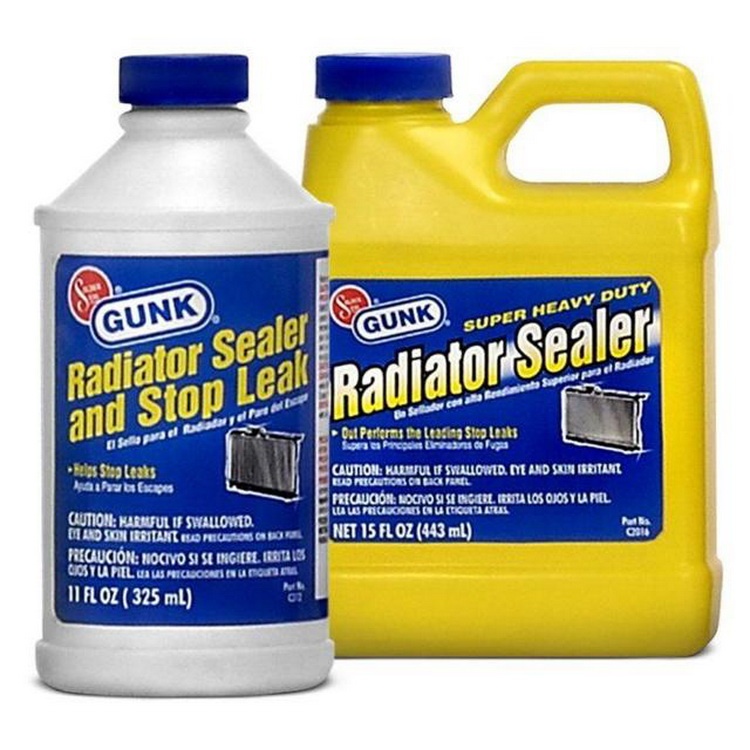

Also claimed to be of American origin. The effect of the drug is not long in coming, the appearance of traffic jams is predictable and stable.
Of the shortcomings, the same danger of the appearance of harmful deposits on the internal parts and surfaces of the system is noted. Therefore, it is dangerous to use it on older machines with already contaminated radiators and thermostats. Possible failures and reduced cooling efficiency.
Working hours are different too. Small holes are slowly tightened, but then the speed increases, significant leaks are quickly eliminated.
Fill In
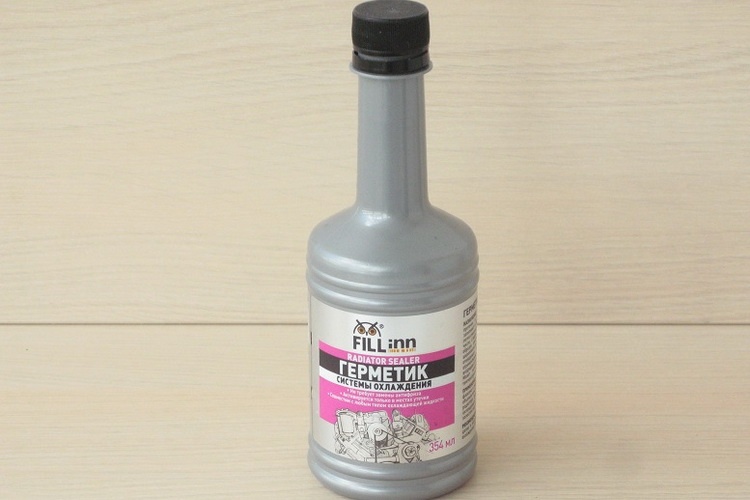

Cheap polymer sealant of domestic production according to American recipes. It does not cope well with large holes, but cracks up to 0,5 mm, and these are the most common, are successfully eliminated.
Medium risk of unwanted deposits. It can be concluded that its suitability is only in the event of minor leaks.
How to fill the sealant in the radiator
The use of all formulations is carried out in accordance with the instructions for a particular product. They are approximately the same, the only difference is that some are poured into a running engine, while others require a stop and partial cooling.


Watch this video on YouTube
All modern motors operate with excess liquid temperature at elevated pressure, leakage of tightness will lead to instantaneous boiling of antifreeze and its release with a high probability of burns.
What to do if the sealant clogged the cooling system
A similar situation can end with the replacement of all radiators, thermostat, pump, and a long procedure for flushing the system with partial disassembly of the engine.
In especially severe cases, this does not help much, therefore, cooling system sealants should be used only in hopeless situations, these are emergency tools, and not a universal standard cure for leaks.


Watch this video on YouTube
Radiators that have lost their tightness must be ruthlessly replaced at the first opportunity.